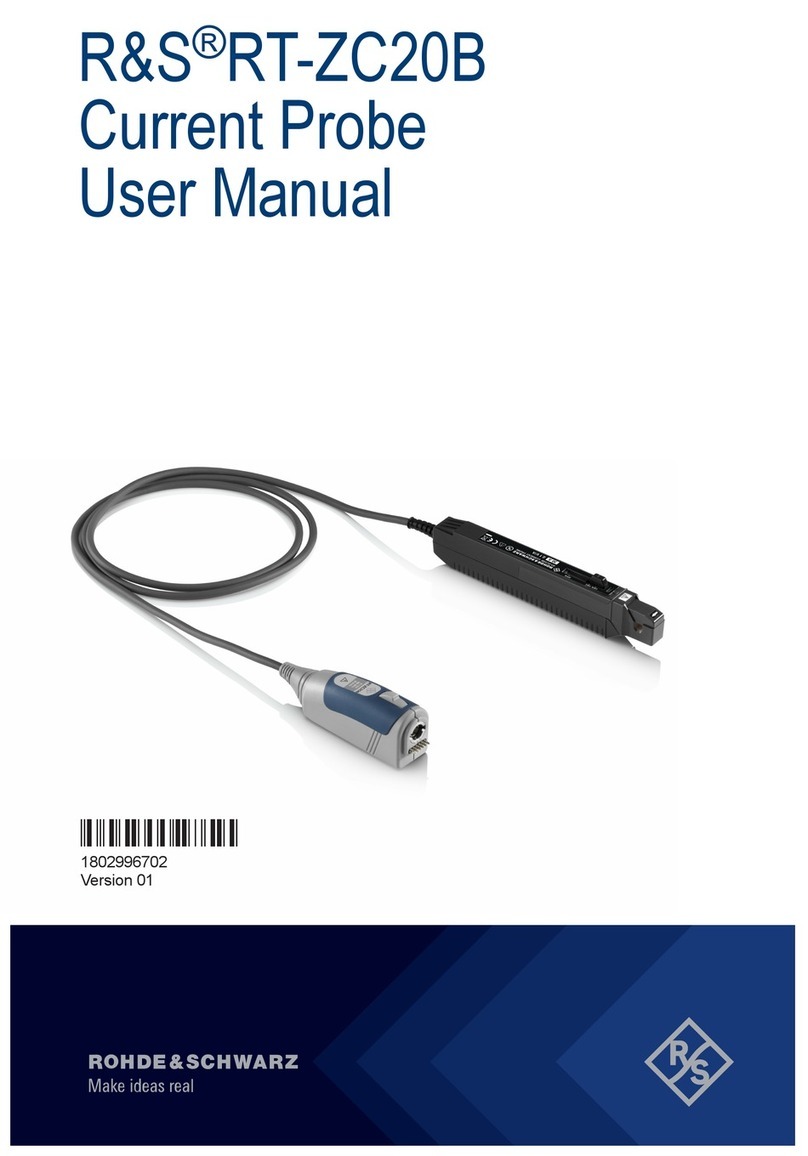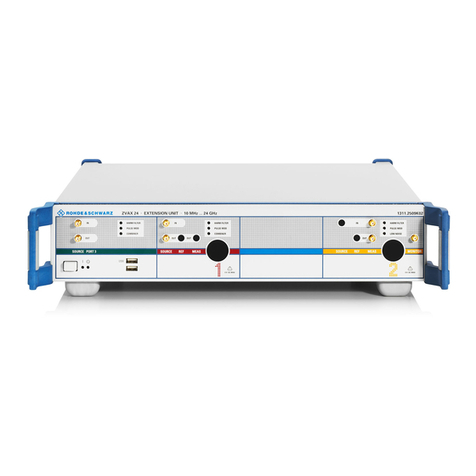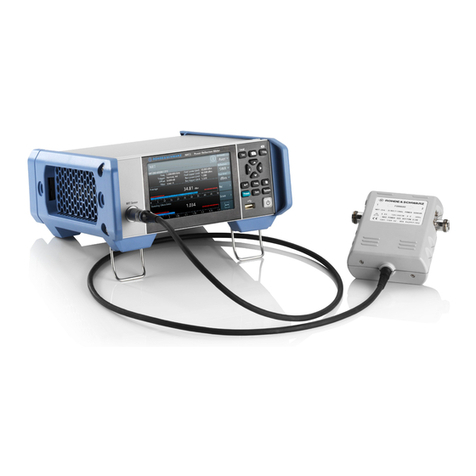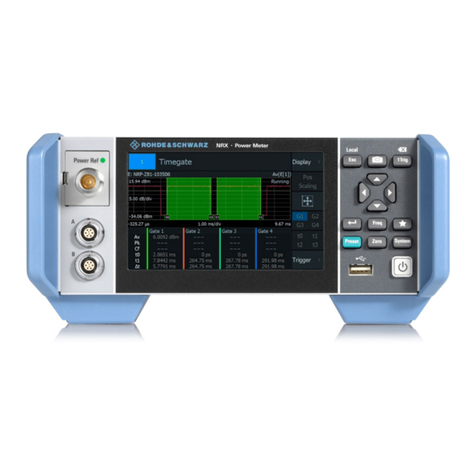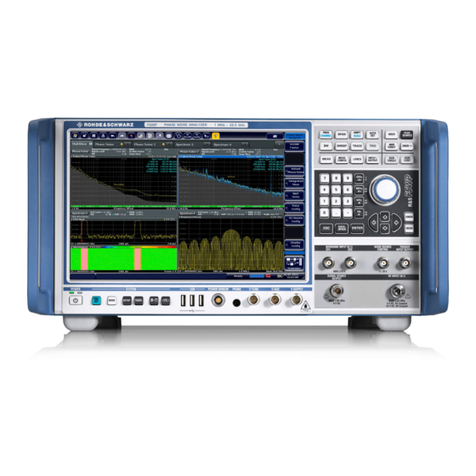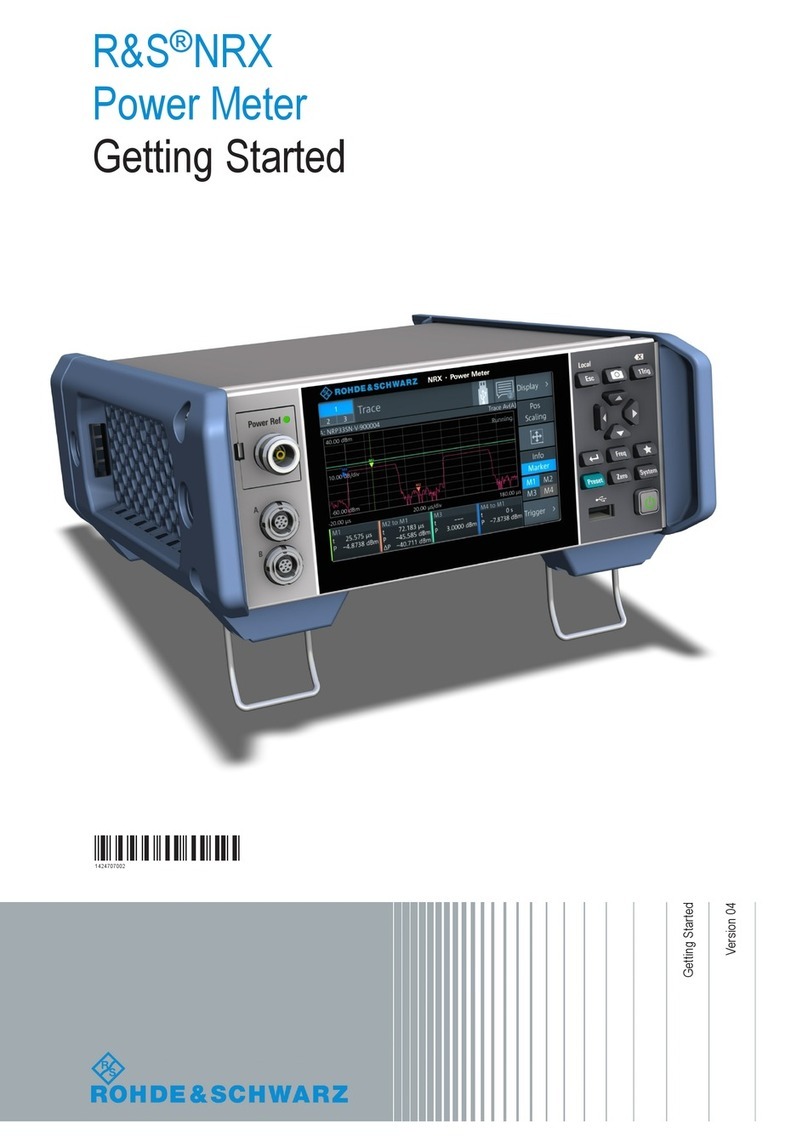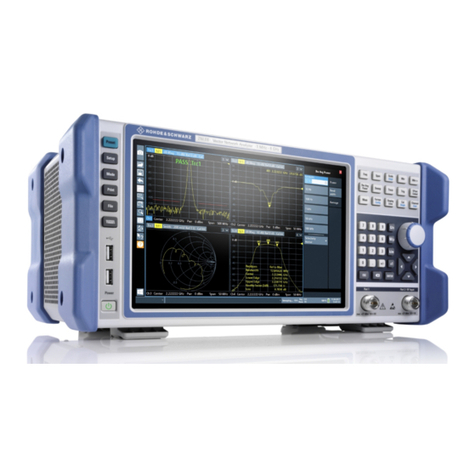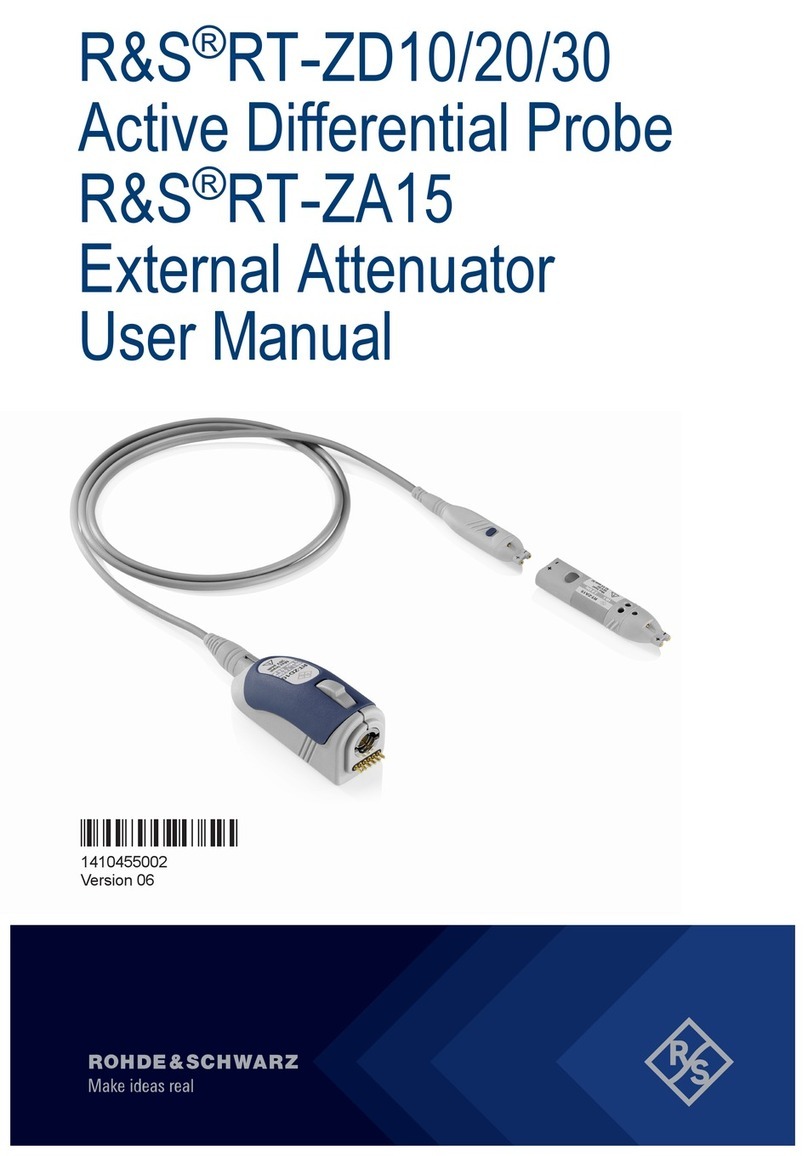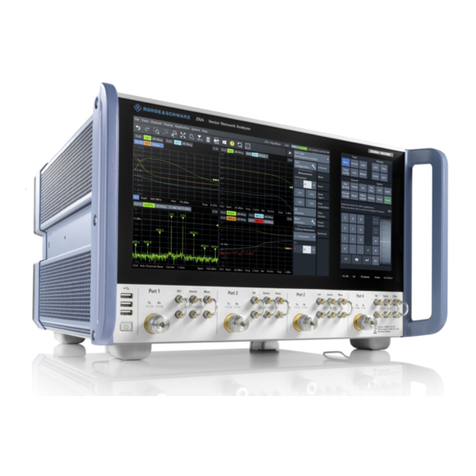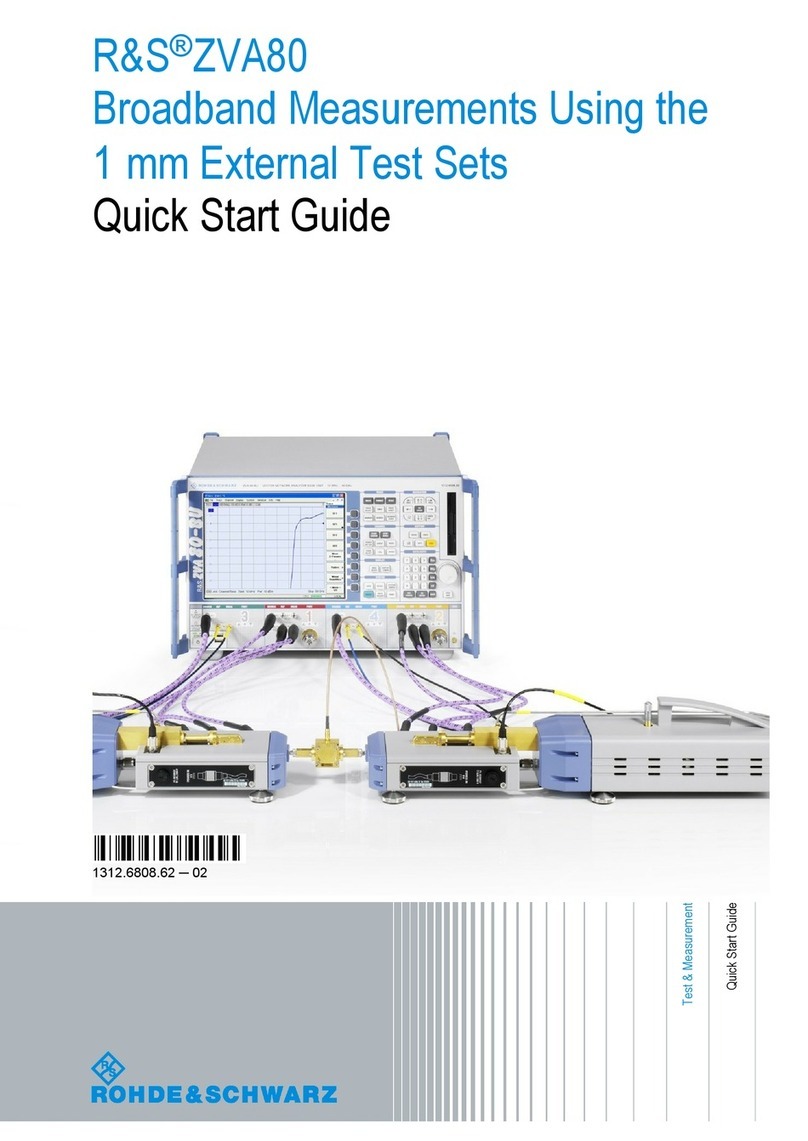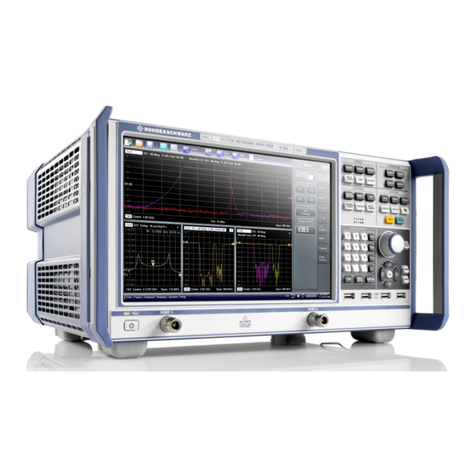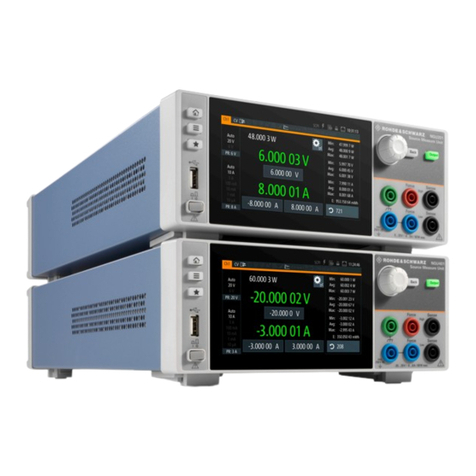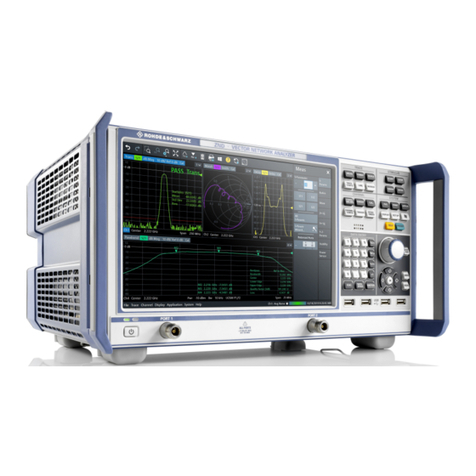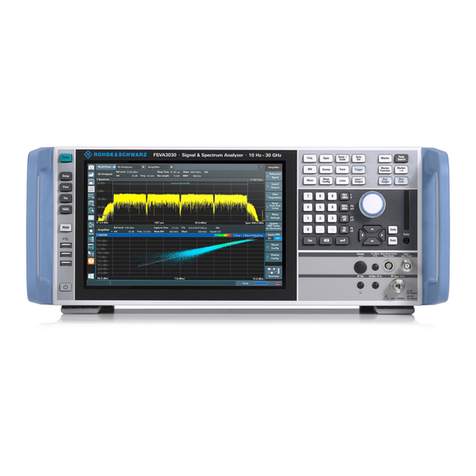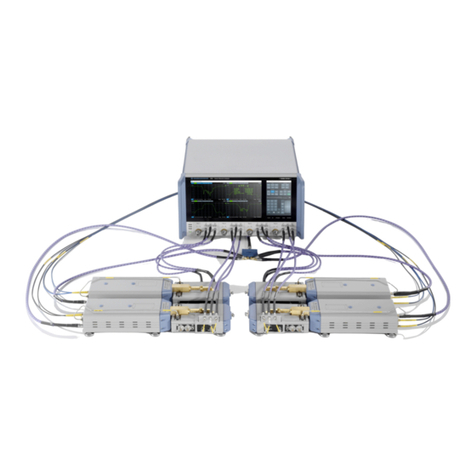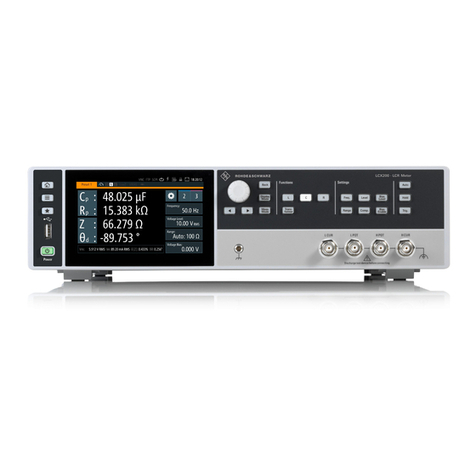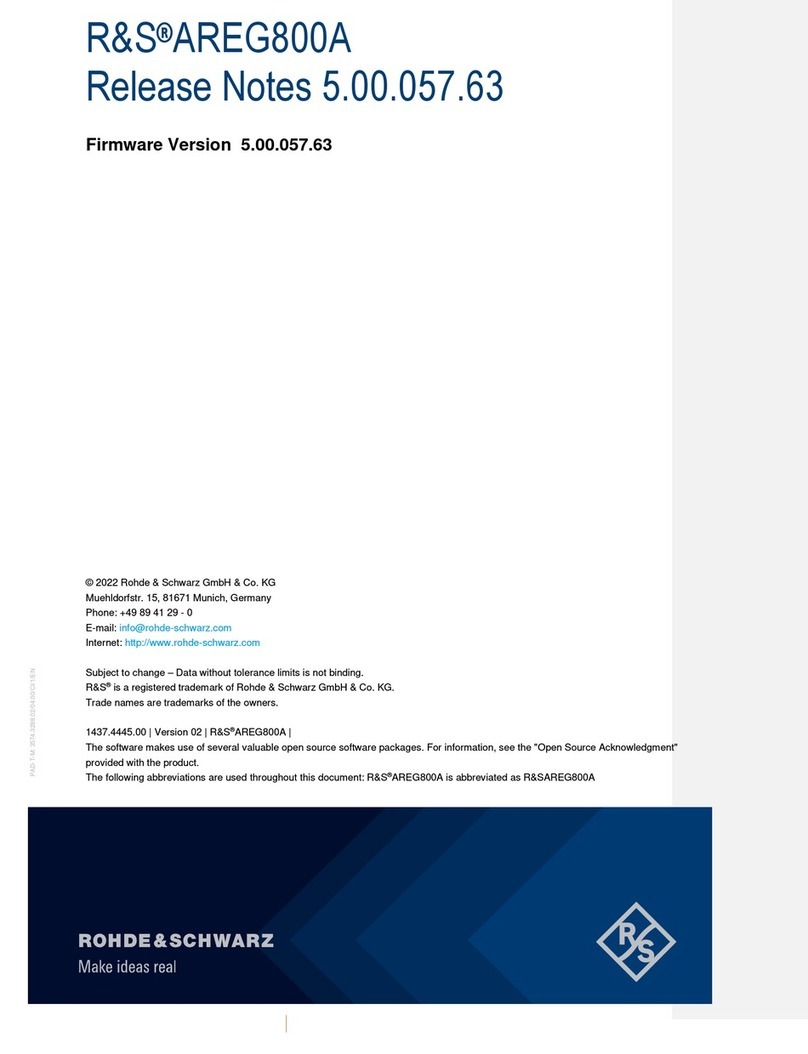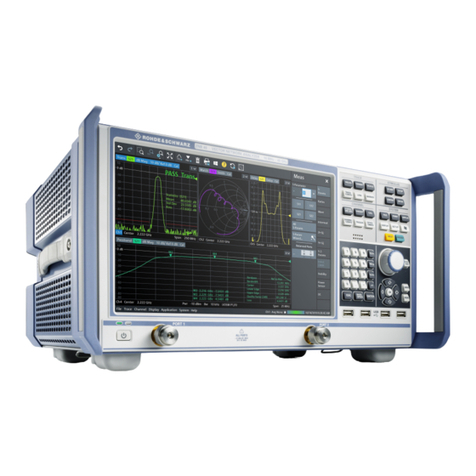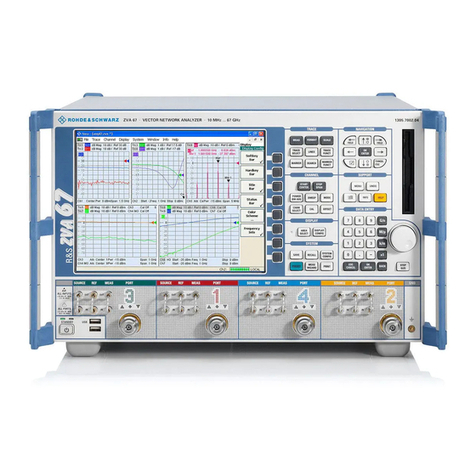Notes on Safety
R&S®RT-ZC20
8User Manual 1409.7814.02 ─ 03
Risk of instrument damage
●To avoid damage to the device, protect it from vibration or shock during
transport and handling, and be especially careful to avoid dropping.
●This device should be installed and operated indoors only, between 0°C
and 40°C (32°F to 104°F) and 80% RH or less.
●Do not store or use the device where it could be exposed to direct sun-
light, high temperature, humidity, or condensation. Under such condi-
tions, the device may be damaged and insulation may deteriorate so
that it no longer meets its specifications.
●Before using the device the first time, verify that it operates normally to
ensure that no damage occurred during storage or shipping. If you find
any damage, contact your dealer or R&S representative.
●This device is not designed to be entirely water- or dust-proof. To avoid
damage, do not use it in a wet or dusty environment.
●The sensor head is a precision assembly including a molded compo-
nent, a ferrite core, and a Hall effect element. It may be damaged if sub-
jected to sudden changes in ambient temperature, or mechanical strain
or shock, and therefore great care should be exercised in handling it.
●Do not apply a static electricity or other source of high voltage to the
sensor. Doing so may damage the internal Hall elements and circuitry of
the sensor.
●The mating surfaces of the sensor head are precision, and should be
treated with care. If these surfaces are scratched, performance may be
impaired.
●Measurements are degraded by dirt on the mating surfaces of the sen-
sor head, so keep the surfaces clean by gently wiping with a soft cloth.
●When the power is on, keep the core section of the sensor closed,
except when clamping it onto the conductor to be measured. The mating
surface of the core section can be scratched while it is open.
●Keep the clamp jaws and core slits free from foreign objects, which
could interfere with clamping action.
●Keep the sensor head closed when not in use, to avoid accumulating
dust or dirt on the mating core surfaces, which could interfere with
clamp performance.












